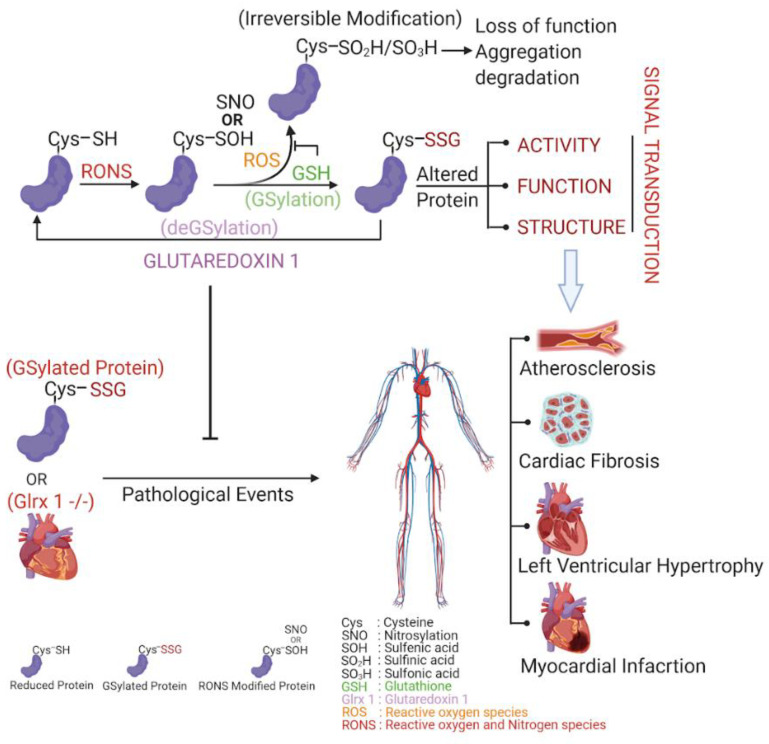Figure 2.
GSylation, deGSylation and its pathological events. Protein cysteines are readily oxidized by RONS as reversible S-OH or S-NO. While these modifications are unstable/short lived, they are prone to irreversible modifications like HSO2/HSO3. The cell’s reducing environment tries to protect these cysteines from irreversible modifications. GSH, being one of the most abundant reductants of cells, protects protein cysteines by making GSH adducts through a process termed GSylation. While GSylation can alter the function, structure, and activities of proteins which affects signal transduction, Glrx 1 can reduce proteins by specifically removing GSH adducts called deGSylation. Hence, GSH and Glrx 1 maintains GSylation and deGSylation homeostasis in cells. Accumulation of GSylated proteins due to altered cell signaling or Glrx 1 insufficiency could induce pathological events like atherosclerosis, cardiac fibrosis, left ventricular hypertrophy, and myocardial infarction, etc.

